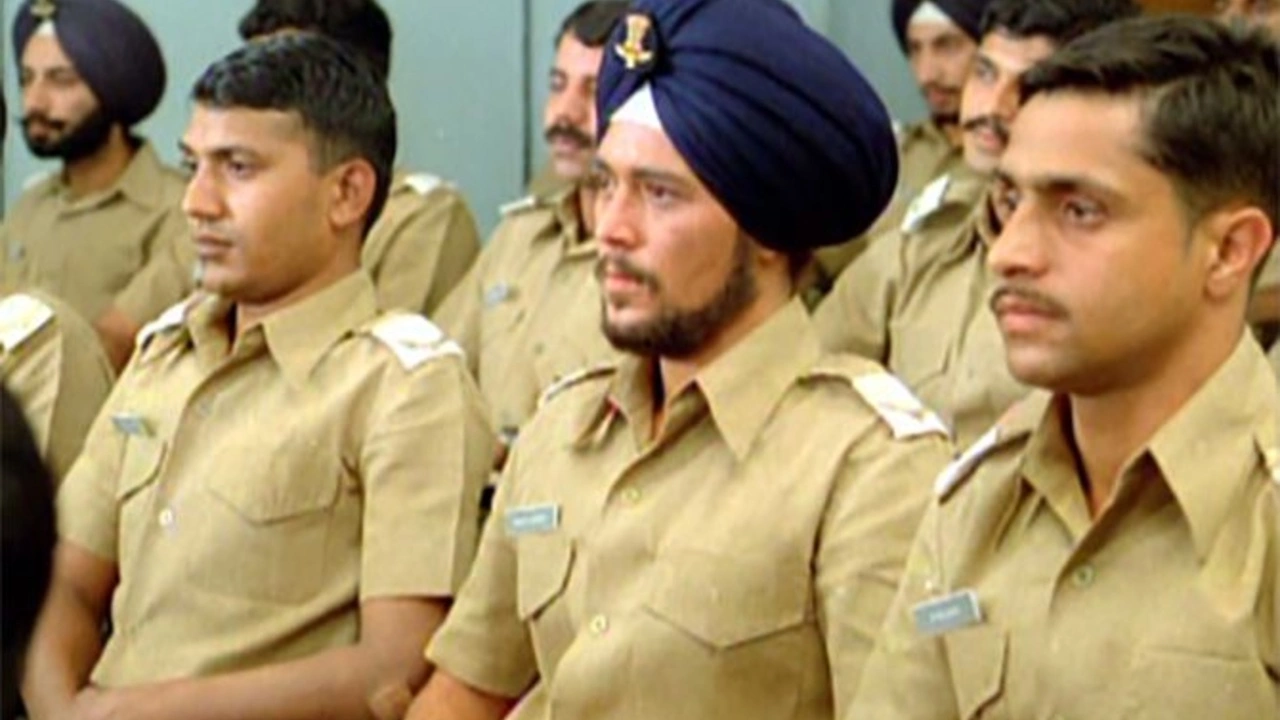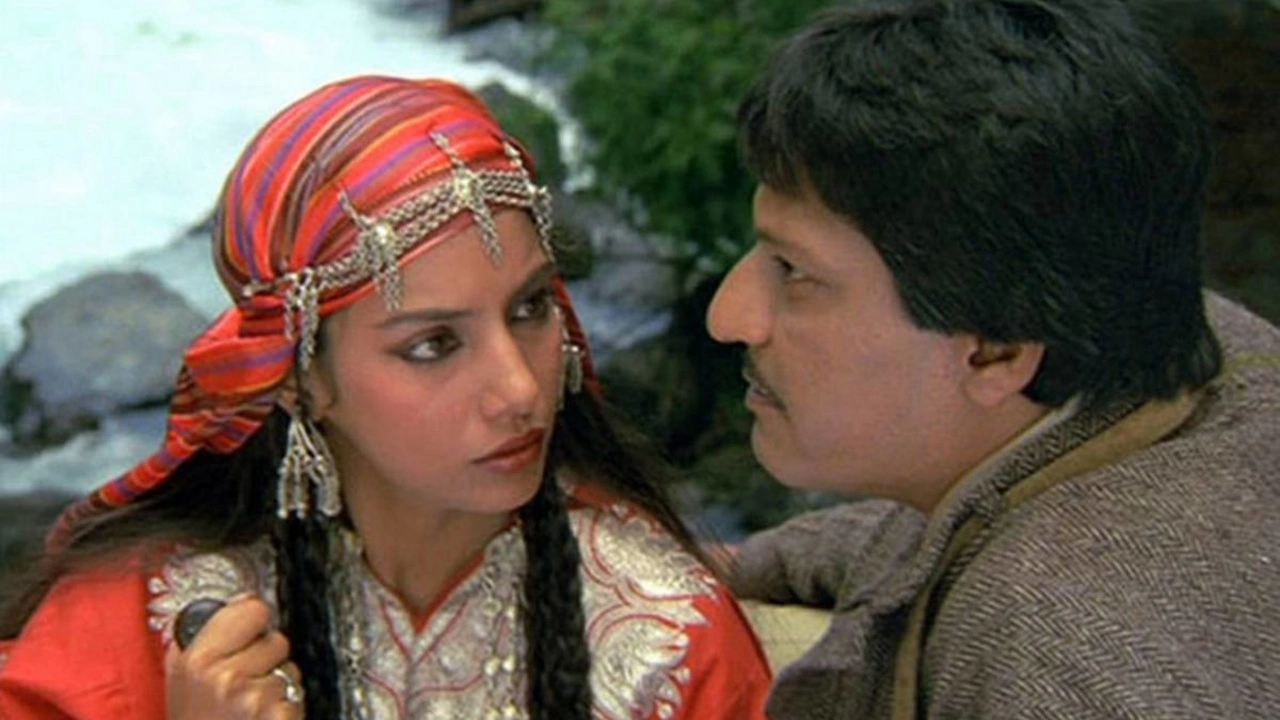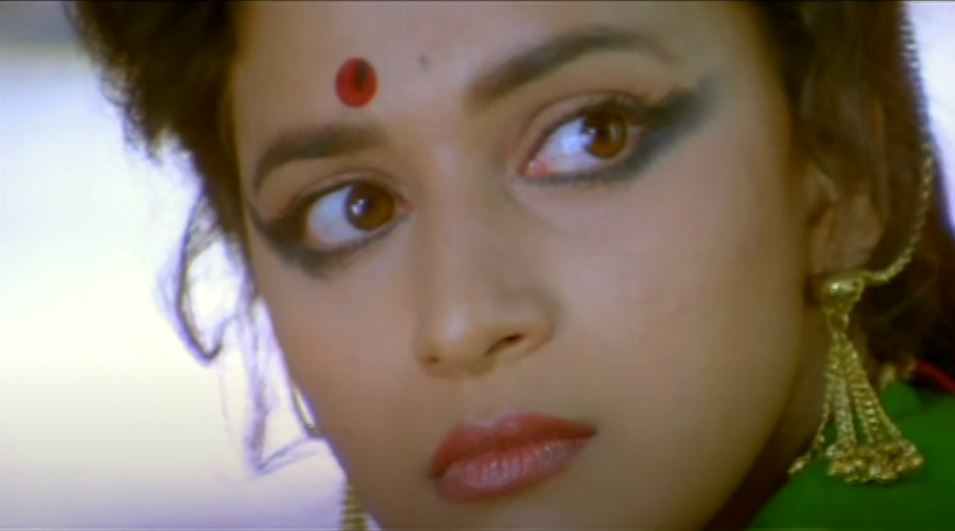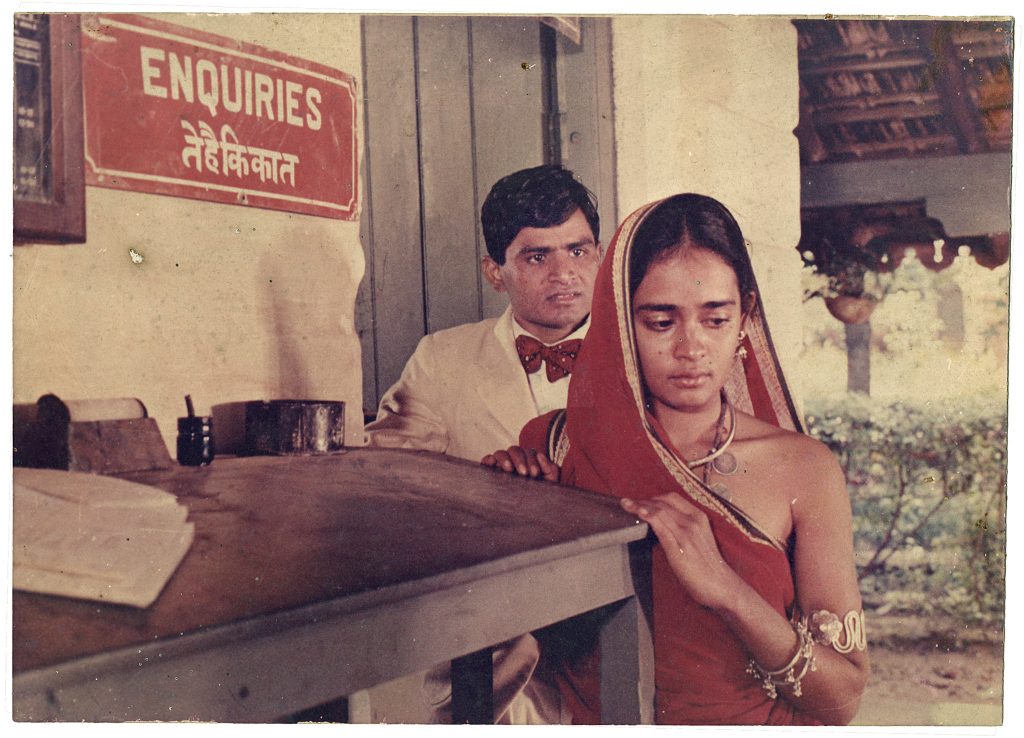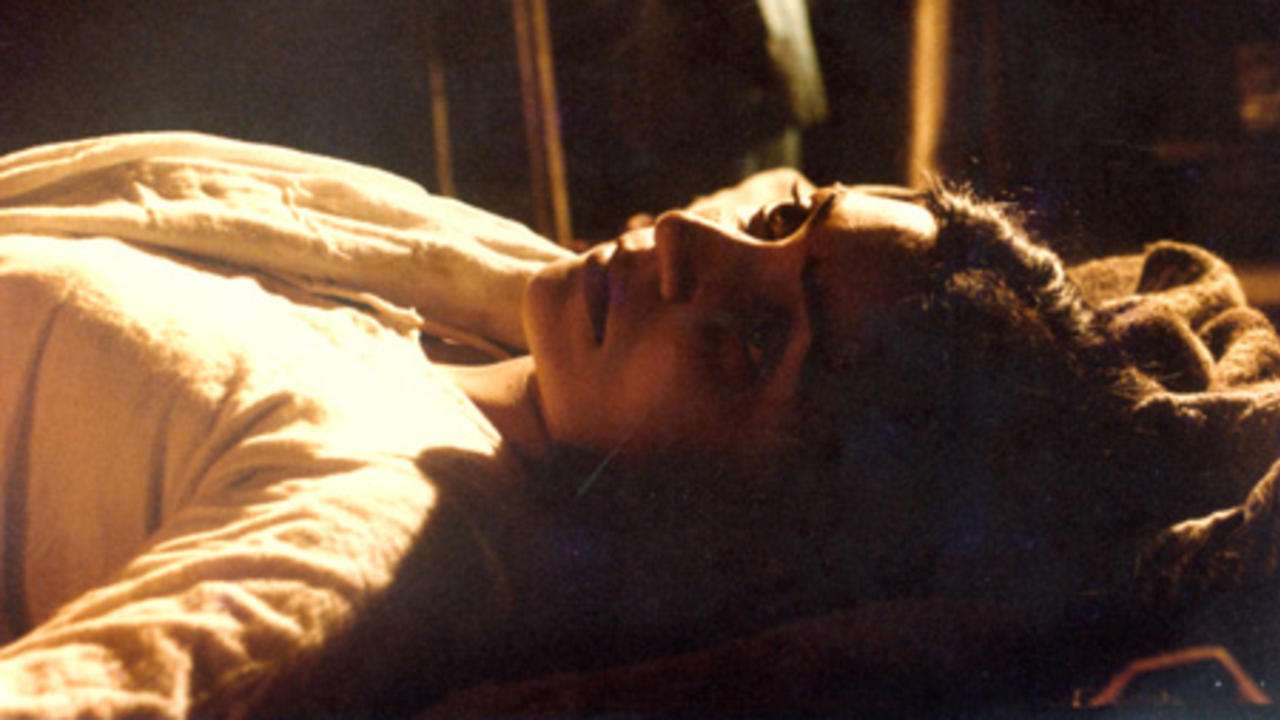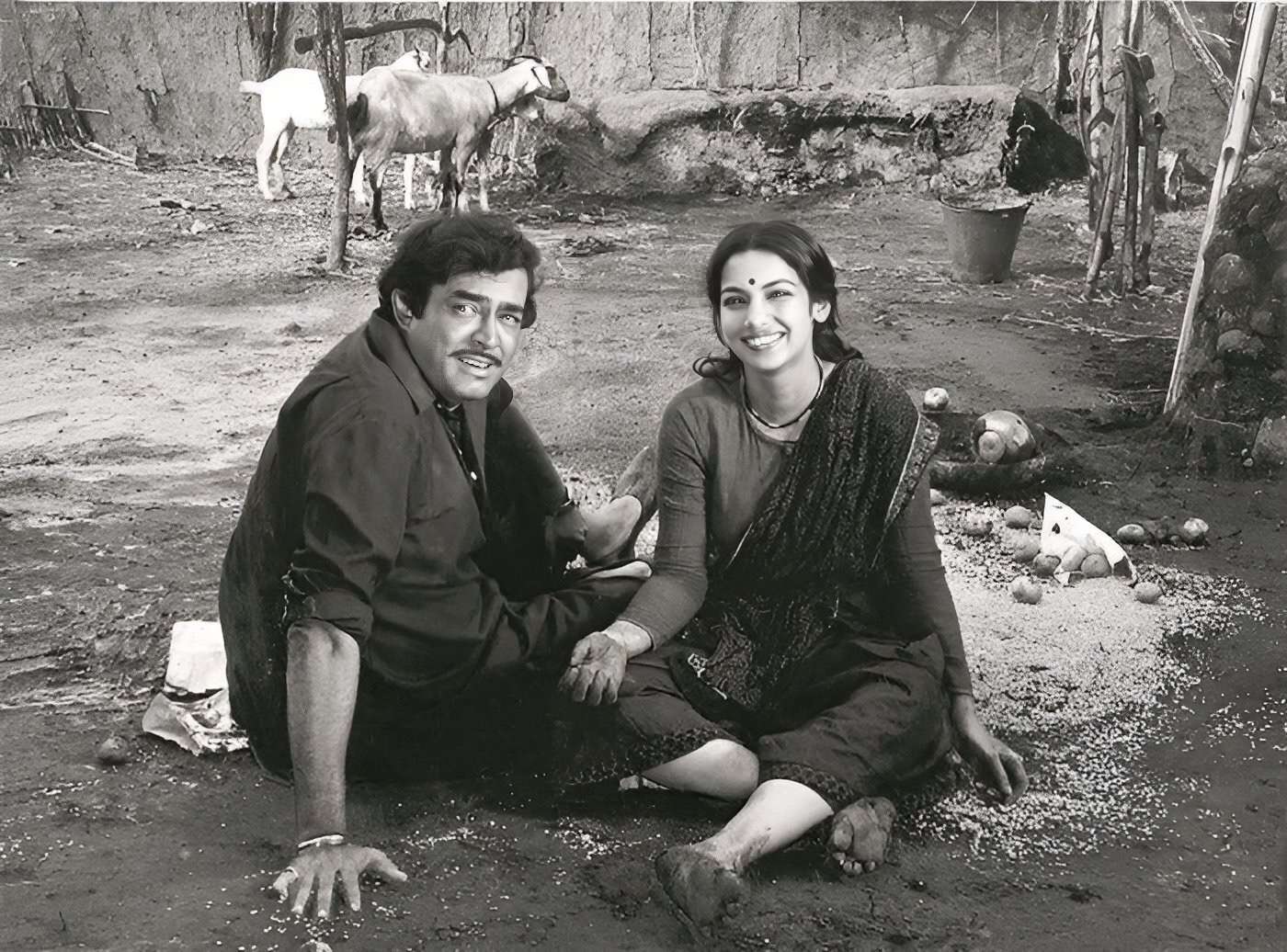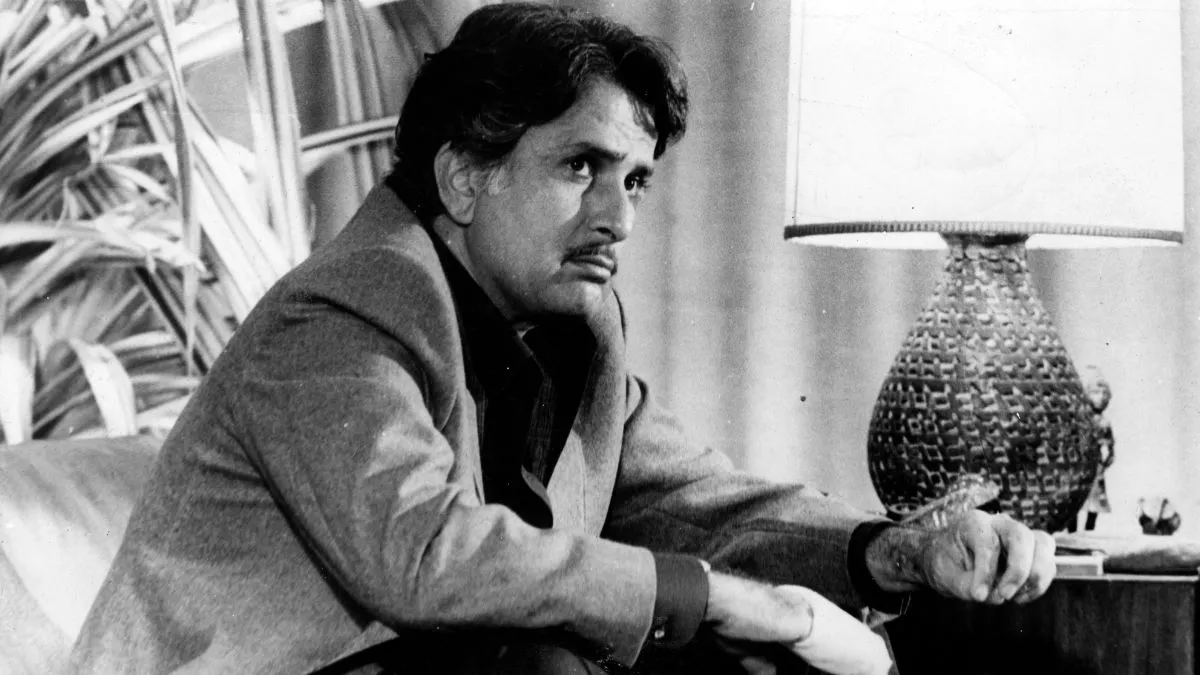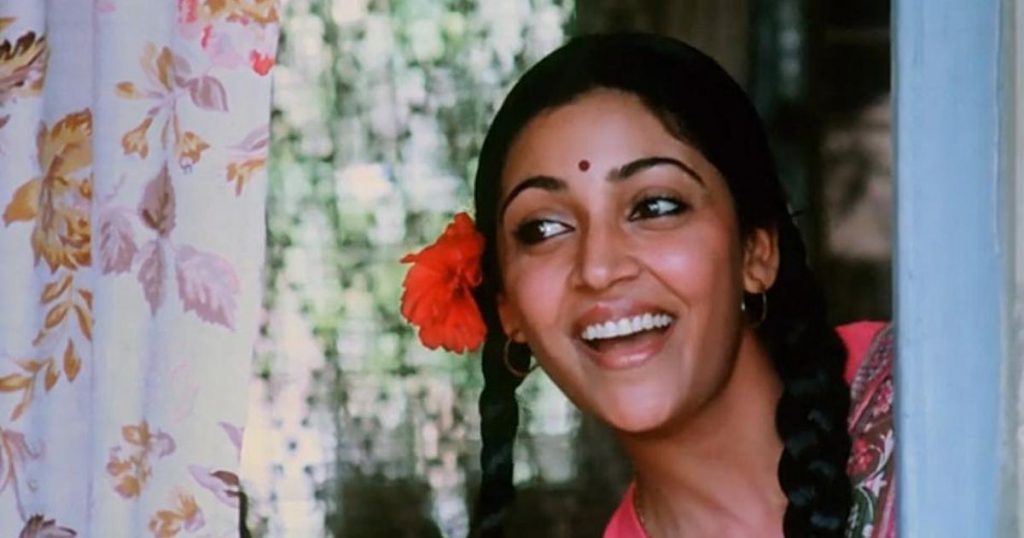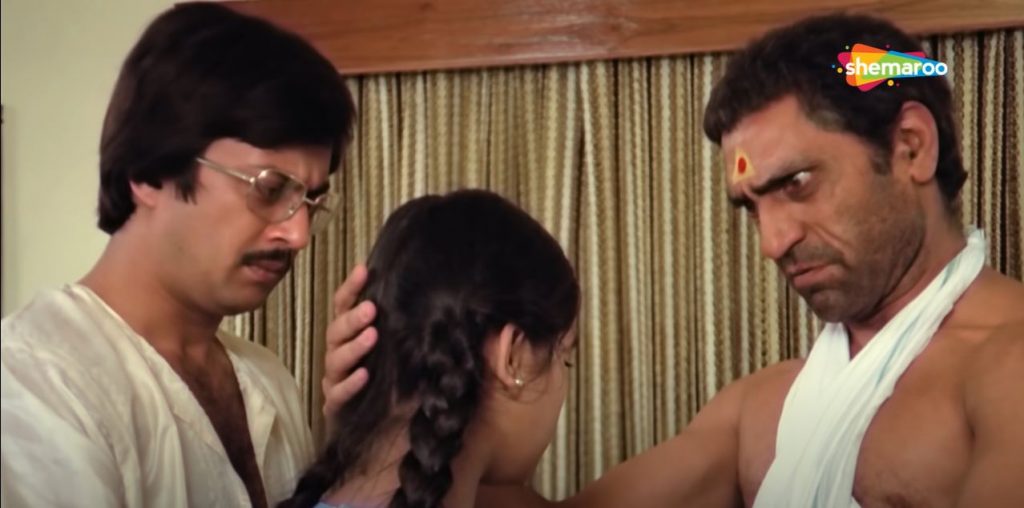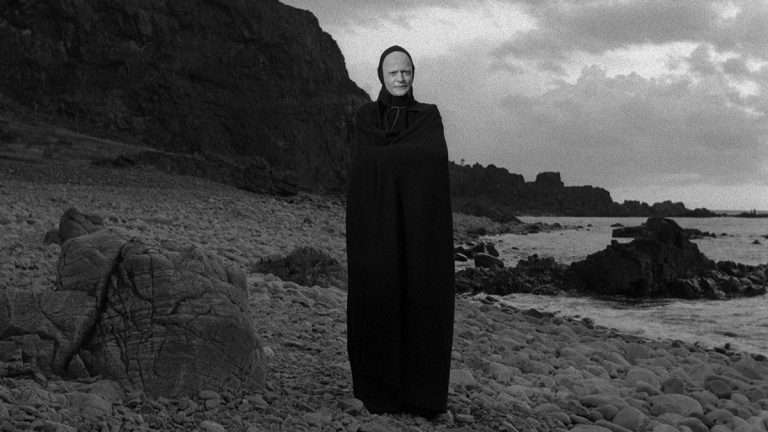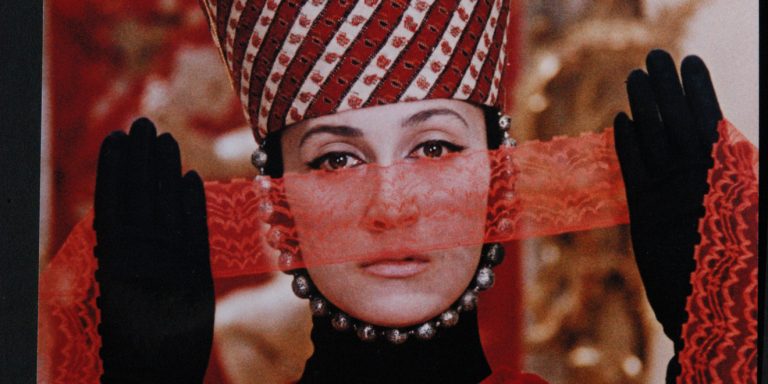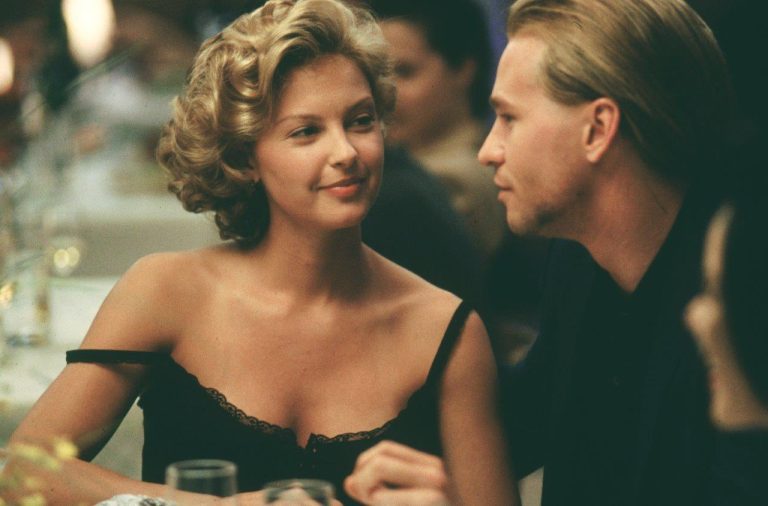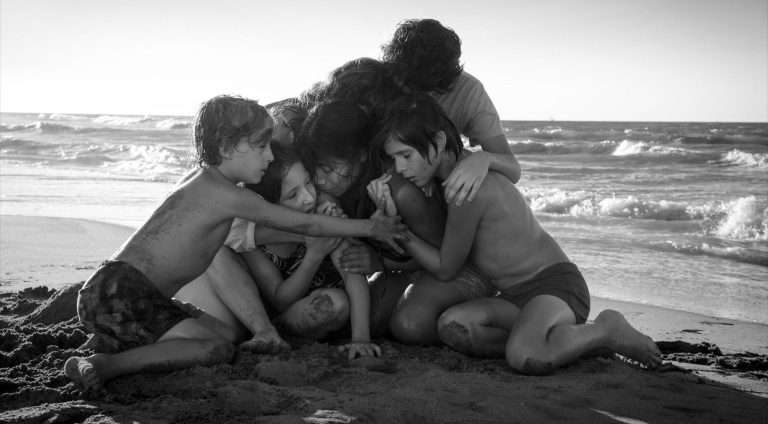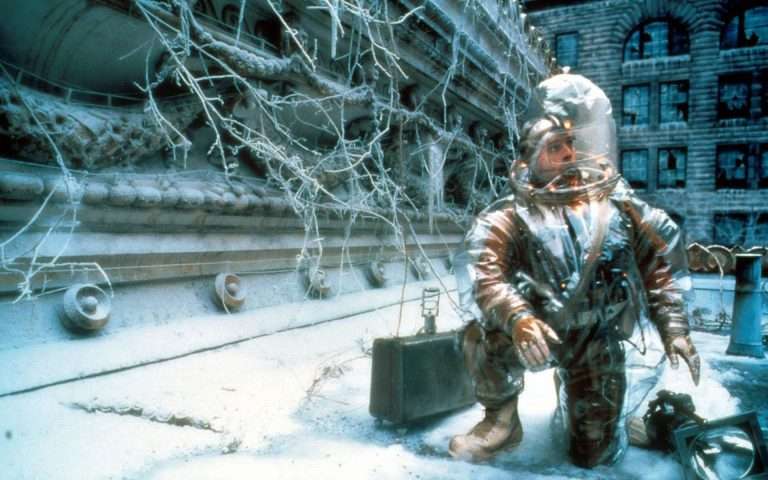I’m a huge fan of Hindi/Indian cinema, with all its glory of song & dance routines. I am not embarrassed or ashamed of it; in fact, this distinctive contrivance of music and dance gives us much more strength and edge. If & when done correctly, we’ve seen time and again how an exhilarating, commercial Hindi/Indian film can impact our collective cultural consciousness. Be it Sholay (1975), or Hum Aapke Hain Kaun (1994), DDLJ (1995), or even Baahubali (2015)!
Not advocating force-fit item songs or a disjointed screenplay, not even refusing to admit the sub-standard work over the decades. But what we’ve done right, we HAVE done it right! We need to give the credit where it’s due. We cannot pretend that we’ve only been producing good content since 2010, or that we’ve been writing great parts for women, or been progressive only since 2010. We just didn’t have social media platforms to shove our opinions on others back then.
Take the 1980s, for instance, probably the darkest and most mediocre decade for Hindi movies. The second wave of Parallel Cinema was also dying, cursory South remakes with aging stars were the flavor of the season, once reigning superstars were now desperately trying to hold on to their fame (Jeetendra, Dharmendra, Rajesh Khanna, Zeenat Aman, Hema Malini et al), basically, crass & cringe took over the content.
But all was not lost even in this darkness! With a new breed of actors, filmmakers & technicians ushering in, we did witness some glorious coalescence of commercial blockbusters and some really sensitive, content-driven films. We’ve venerated all of them over the decades, but there are some chapters which are lost, some gems dusting under, some prints which have been oxidized.
Similar to Hindi Movies of the 80s: The Best Iranian Movies Post Iranian Revolution (1990s)
I’m attempting to bring out 10 of the most under-appreciated, under-seen, under-celebrated Hindi films of the 80s here, the kind we would have instantly binged watched if released today. I know ten is too small a number to contain their brilliance, but these are the ones I still find pertinent. According to me, these ten (and many more) films from the 80s should be revealed and loved much more than they have been. Have a look & let us know about your list.
10. Chameli Ki Shaadi (1986)
Director: Basu Chatterjee
Starting the list with Chameli Ki Shaadi, because the rest of the films on this list are far more underseen than this one. During the time when Indian television channels used to show non-dubbed Hindi films, Chameli Ki Shaadi used to air quite often, yet it remains underappreciated. We rarely discuss it, include it, or even mention it when we talk about Hindi cinema.
Directed by Basu Chatterjee, the film is a hilarious satire on the caste system in India. With its caricaturish characters, Chameli Ki Shaadi has gained a cult following over the decades. Burlesqued characters have been consistent in Chatterjee’s cinema, probably because he had spent almost 18 years as a cartoonist at the Blitz magazine in Mumbai. Chameli Ki Shaadi also operates on an impish, sarcastic, and cartoonish sense of humor, and you’ll find yourself laughing out loud in silly moments throughout the film.
Charandas (Anil Kapoor), a young man in a village, has no aim in life except to be a pehelwaan (wrestler). He takes an oath that he will not court or marry a girl until he hits the age of forty. But things change when Charandas meets Chameli (Amrita Singh, overshadowing everyone here), and falls in love with her.
This incredibly original movie evokes laughter out of some real-life caricatures, much like Chatterjee’s earlier films, such as Chhoti Si Baat (1976). But he keeps up with changing times. Unlike the employed, office-going main lead, Arun (Amol Palekar), in Chhoti Si Baat, Charandas here is a jobless, street-wandering, aimless youth, shrewdly reflecting the unemployment plague that was engulfing the nation in the 80s. Those were the days when actors were simply playing parts they liked, sans the reckoning of their ‘public image’. Case in point, Pankaj Kapur plays Amrita Singh’s father despite being only four years older than her in real life.
Related to 80s Hindi Movies – Directors From Parallel Cinema Entering Mainstream Bollywood
Chameli Ki Shaadi is what I call ‘Ayushmann Khurrana cinema’ of the 80s – socially relevant comedies, set in smaller towns. However, unlike many of the current films of the genre, Chameli Ki Shaadi never strained itself for a laugh. This effortless comedy is so silly, yet so sweet. You’ll have a constant smile on your face, which won’t leave you anytime soon.
Where to Watch:
9. Vijeta (1982)
Director: Govind Nihalani
Vijeta is the coming of age story of Angad (Kunal Kapoor). It is time for him to decide what he wants to do with his life. What follows is his struggle to become a victor, both with himself and the outer world.
Shashi Kapoor has been a far more superior, intelligent, and adventurous producer than he has ever been an actor. He dared to produce so-called ‘content driven’ films, (which today’s filmmakers make too much noise about on social media) back in the day when Hindi cinema was going through its darkest hour. Junoon (1978), Kalyug (1980), 36 Chowringhee Lane (1981), Utsav (1984), and Vijeta to name a few. There were allegations that Shashi made Vijeta just for his son, Kunal Kapoor. But the first choice for the Sikh boy’s role was always Raj Babbar. It was Kunal who managed to convince Nihalani & Kapoor to take him instead, as it would challenge him as an actor.
Vijeta, is a war film without showing any war, barring the final few minutes of the film. It also doesn’t have any jingoistic, chest-thumping, Bharat Maata Ki Jai moment either. I remember when people were praising Raazi (2018) for being the first patriotic film sans any jingoism, it made me wonder why we are so unlettered about our own content, why have we suddenly become so contrite of our own cinema that we simply don’t want to acknowledge it anymore?
The film is a conglomeration of beautiful progressive motifs, without making any noise about it. For example, Angad’s closest friends in the IAF consist of a South-Indian Hindu man from Andhra Pradesh, a Catholic officer from Bhopal, and a Muslim man from Allahabad. Vijeta also gallantly humanizes our always efficacious heroes of the Indian army. Largely, we’ve only venerated our Indian armed forces (and deservingly so) on-screen, but Vijeta attempts to decode the human inside that uniform. Hrithik’s Karan Shergill in Lakshya (2004) is an extension of Angad in Vijeta.
In an incredibly feminist scene in The Fame Game (2022), Madhuri Dixit is reprimanding her on-screen son for not respecting a sex worker enough to even know her name. “She is only doing her job”, she retorts. We all clapped. However, Rekha’s Neelima had said it 40 years back to her husband, Nihal (Shashi Kapoor) when he was trying to defend his drunken one-night stand, by dismissing her as a prostitute. Only if we had Insta, Twitter & memes back then! And, decades before Badhaai Ho (2018), we’ve seen middle-aged parents making love on-screen.
Related to 80s Hindi Movies – The Political Subtext Of Govind Nihlani’s 1984 Satire ‘Party’ Is More Relevant Now Than Ever
It is the most tangible, faithful, and personal Hindi film about the IAF, with some gorgeous aerial combat sequences. Vijeta, operates on quiet pluralism with such tender subtlety, that will surely well up your heart.
Where to Watch:
8. Khamosh (1985)
Director: Vidhu Vinod Chopra
“Very few of us are what we seem.” said Agatha Christie in The Man in the Mist, and Khamosh encapsulates that in over 100-mins. Director Vidhu Vinod Chopra, in an odd way, pays homage to the 1960 classic, Psycho, and many 70s Italian cop dramas. You might also find direct inspirations from Alistair MacLean’s best-selling novel, Bear Island (1971), which has a very similar setting, and characterization. But, Khamosh, eventually became an Agatha Christie reverence.
The film is a brilliant whodunit. When a starlet is murdered on a film location, a detective arrives to investigate the cast and crew. Shabana Azmi, Amol Palekar, and Soni Razdan played fictionalized versions of themselves, using their real names for their characters. So Amol Palekar is playing – Amol Palekar. The same goes with Shabana & Soni.
It’s a daring film that has taken a dig at Bollywood. So, the film they are shooting is forebodingly called Aakhri Khoon, like many such popular trash titles of the 80s. The location of the shoot was Kashmir, yet another staple commercial Hindi film location of the 80s. And the actors are mouthing harp dialogues like, “main tumhara khoon pee jaoonga” and many such. This delightful parody projects plausibility. Khamosh, is a pungent commentary on Bollywood, with dark secrets, casual sexism, sleaze, jealousy, and the vicious indictment of chauvinism making each character, almost unlikable.
With a runtime of just about 100 mins, Khamosh, is a taut, edge-of-your-seat thriller, where the mechanism, the fluidity, the rhythm of the film might feel dated to some, but you cannot deny its brilliance.
With such a singular plot and no superhit song, the film remained unreleased for around 2 years, because no distributor was ready to buy it (a perfect OTT release, isn’t it?). Many producers, including Yash Chopra, saw & loved the film, but nobody came forward to buy it. Ultimately, Vidhu Chopra decided to release the film on his own, with the owner of Regal cinema in Bombay, with a 50/50 split on profits. The film was a surprise hit and ran for weeks, but only a few hundred of people from Bombay saw it.
Khamosh, is an important film for every aspiring filmmaker to study how the lack of budget & popular excess can easily be compensated with a powerful imagination. The film is indignant and earnest yet never staid and moralistically preachy. Khamosh, successfully signifies that in spite of all public insults, underneath all the sticky mud, the pluck and the spirit of Bollywood will shine through.
Where to Watch:
7. Prem Pratigyaa (1989)
Director: Bapu
Commercial Hindi cinema of the 80s can leave you scarred for life. The sudden influx of South directors, shoddy remakes, dialogues & scripts that will make your skin crawl, and fashion that had the power to make your eyes bleed. Basically, a cringe-fest, out & out. However, within this dark tunnel, there were few lamps that were shining bright. Prem Pratigyaa, being one of them. The film is as commercial as it gets, a low-budget potboiler, with song-dance routines, a mandatory love triangle, and an essay about the power of love. But, what sets it apart is the screenplay & the performances.
Mithun Chakraborty, is an unregenerate alcoholic, Raja. With no actual motive to live, he takes to liquor for a slow death. His life completely turns upside down as he falls in love with Madhuri Dixit’s Laxmi.
This was probably the last meaningful, rather powerful performance by Mithun Da as a leading hero, before he kicks the snowball down the hill with his low-budget, mind shredding action flicks of the 90s. But, the film actually belongs to Madhuri Dixit. Her ‘slum accent’, body language, grace, and the ability to convey through her eyes, were all impeccable, she was a live wire in the film. Though her breakout films, Tezaab & Ram Lakhan, were released before Prem Pratigyaa, she was a force to reckon with in this one.
Padmini Kohlapure shot for the film for a few days in 1986 before opting out, due to her marriage. And director Bapu, who had blocked Madhuri’s dates for a shelved film, Bajrangi, used them for Prem Pratigyaa instead.
There are sub-plots that are forced, clingy, and totally unnecessary. Like the comedy track with Deven Verma & Aruna Irani, which is entirely in isolation, and has got nothing to do with the plot. The story is also shopworn and has no novel extensions. Yet, the treatment and the solid performances by the cast just transcend the film beyond its writing. You might associate the film with the beautiful romantic ballad, ‘Pyar Kabhi Kam Nahi Karna’.
The authentic fabric of the film overpowers all its glaring flaws. Prem Pratigyaa remains one of the most underseen (and definitely under-admired) Hindi films of the 80s.
Where to Watch:
6. Massey Sahib (1985)
Director: Pradip Krishen
Massey Sahib is one of the finest, starkest, and most precocious critiques of British colonialism. It’s an essay on the psychological reverberations of British rule on Indians, and its wounding residues. Based on Joyce Cary’s 1939 novel “Mister Johnson”, the film follows the exploits of Francis Massey (Raghubir Yadav), a petty Indian clerk, who works in the Deputy Commissioners’ office, under British rule in colonial India. He aspires to become one of the rulers and does everything he can to impress his boss.
Director Pradip Krishen has made only 3, but magnificent feature-length films. The cult, In Which Annie Gives It Those Ones (1989) is one of them. His ephemeral career has had an immutable effect. Massey Sahib was a key factor in the second wave of the Parallel Cinema Movement in India. The film also features acting guru, Barry John, and Arundhati Roy, she was yet to write her award-winning book then.
Siddharth Basu (yes, the quizmaster of India) was the original choice for Massey. In fact, he had shot a sample scene too, but he went abroad, and a young theater actor, Raghubir Yadav, was eventually finalized. This casting was actually a blessing in disguise as Yadav’s command over Hindi came in handy for the evolving dialogues all through the shooting. Raghubir Yadav won two International acting awards for his debut film.
Initially, Raghubir Yadav had no idea how to go about playing this complex character. After reaching the location, Panchmarhi, a week before the shoot, saw an old man on the street. He was wearing a similar outfit that Massey was supposed to wear, and he seemed to belong to that era. Yadav started following his mannerism and gave a funny, desolating, and thought-provoking portrayal, all at the same time.
Arundhati’s almost muted, subjugated character represents an entire generation of traumatized citizens, who were silent spectators of the insidious, dominant colonialism exploits. Many believe that there are lots of parallels the film has with Mrinal Sen’s excellent, Bhuvan Shome (1969), in terms of characterizations, and symbolism. I’ll let you decide for yourself.
More than a masterpiece, Massey Sahib, is a momentous piece of Hindi cinema, which is underseen, underrated, and forgotten.
Where to Watch:
5. Damul (1985)
Director: Prakash Jha
Commencing his career as a short & documentary filmmaker, Damul was Prakash Jha’s second feature film. A native of politically poisoned Bihar, Jha has made his career out of socially committed dramas, subjects close to his heart, and complexities he has had a first-hand experience with. Damul, cuts you deep and lets you bleed.
The story is about a bonded laborer who is forced to steal for his landlord, with whom he is bonded until death. Set in rural Bihar in 1984, the film focuses on caste politics and the oppression of the lower castes in the region, through bonded labour. The film also highlights the issue of heavy migration of the poor villagers of Bihar to richer states like Punjab in search of livelihood.
Damul, is a relentlessly gut-wrenching film, which rips your heart apart in each frame. It’s not an easy watch. The dew-drop tenderness compounded by a compelling resilience of spirit transcends the film beyond and refuses to let go. Each performance is a masterclass, led by Annu Kapoor and Deepti Naval.
Set in 1984, the film was based on Gaya-based writer Shaiwal’s short story Kaalsootra. And, what bludgeons you the most is the fact that it wasn’t a period drama! In the feudal era, a bonded laborer was still an extremely prevailing practice in India back then. A year after winning the World Cup, an era where black & white TV was fading out, India was (or perhaps, is?) still grappling with such social demons. Damul, is a faithful representation of diabolical exploitation, which nobody saw during its release.
Related to Underrated Hindi Movies of the 80s – 10 Most Underrated Hindi Movies of 2000s
Prakash Jha’s Bihar is an observation. With four of his incredible films, Damul, Mrityudand (1997), Gangajal (2003) & Apharan (2005), he has encapsulated his state’s upheaval with such varied, almost circumambulatory routes and points of view, that you can literally witness the political, and societal metamorphosis of Bihar.
Where to Watch:
Damul is easily available on YouTube, if you have the stomach & intention, I would highly recommend the film.
Watch Damul on YouTube
4. Namkeen (1982)
Director: Gulzar
Like Lata Mangeshkar, Gulzar was, is, and always will be a defining pillar of the cultural consciousness of the country. More so, because of his musical lineage. I mean, you might not know who directed Aandhi (1975) or Maachis (1996), but there’s no way you haven’t heard ‘Tere Bina Zindagi Se Koi’ or ‘Chappa Chappa’ or ‘Beedi’ or even ‘Jai Ho’! His mastery over his craft, whether it’s poems, nazms, lyrics or films, has defined and re-defined eras. His passion of translating literature into films turned out to be a blessing for Hindi cinema, and Namkeen is one such blessing.
Adapted from his favorite author, Samaresh Basu’s Bengali story, “Akal Basant”, Namkeen, concerns three unmarried sisters & their mother, Jugni, who live in a remote village in Himachal Pradesh. Their lives change when Gerulal, a truck driver, begins living with them as a tenant.
Gulzar loved Basu’s story from the time he first read it. He met the author for the first time when he was assisting Bimal Roy in the 50s. And when he finally made the film, he always wanted to, he couldn’t find enough distributors, owing to the unusual story & casting. After all, his sensibilities were up against a decade that was defined by ‘Bhankaas’ & ‘Jhopdi Mein Charpai’! Namkeen had a limited theatrical release and found its deserving appreciation & audience only after Doordarshan premiered the film later on.
Waheeda Rehman played the mother, Jugni and Sharmila Tagore (Nimki), Shabana Azmi (Mithu) & Kiran Vairale (Chinki) were the three sisters, in that order. Rekha was hired to play Nimki, she even shot for a few days, but was eventually replaced by Sharmila Tagore. This progress was, allegedly, not well received by Waheeda Rehman, since she now had to play mother to one of her contemporaries. All the four women weave magic in this hesitant, restrained drama, and yet, Sanjeev Kumar steals the show.
Namkeen, is calm & collected bittersweet exposition which operates on the dichotomy of fragility and steely strength of the beaten and cornered characters. Gulzar used a melancholy canvas to portray the obscurity and veracity of life. The film continues to be one of the most under-appreciated films of the 80s.
Where to Watch:
3. New Delhi Times (1986)
Director: Ramesh Sharma
Hindi cinema has almost never penetrated the surface of the Fourth Estate. And whenever they did, the results were rather patchy or preachy. Case in point, Main Azaad Hoon (1989) or the terrible, Rann (2010). New Delhi Times, is perhaps the only Hindi film that mirrors the journalistic reality, without compromising on its integrity.
The film tells the story of an honest journalist Vikas Pande (Shashi Kapoor) from Ghazipur in eastern Uttar Pradesh who moves to Delhi to run a newspaper and soon uncovers a political assassination, and in the process, falls prey to a corrupt system and the nexus between politicians and media barons.
New Delhi Times, is a pure genre film, which authentically submerges itself in politics-media corruption nexus, with credible research. The screenplay’s honesty shines through, which is not surprising, considering it was Gulzar Saab’s handiwork. It’s a complex, nuanced political thriller that casts lengthy shadows on the lives of the characters involved.
With his first feature film, a Delhi-based, young college pass out, Ramesh Sharma, somehow managed to get an appointment with the ‘star’, Shashi Kapoor for narration at the Taj Hotel, Bombay (hold your horses, it was 1983!). Within a few minutes of narration, Shashi Kapoor approached his friend & actor, Jeetendra, seated at the next table with some friends. He introduced Ramesh as the director of his next film, which stunned this young boy, who was yet to finish the narration! Shashi Kapoor received his only National Award for Best Actor for New Delhi Times.
The universal ambivalence of journalism is a constant undercurrent of the film – a ‘good story’ that can also be a human tragedy. It beautifully comes through in a brilliant gnomic scene, where a photojournalist tells Shashi Kapoor’s character, “Yahaan aaya to pata chala dangey ho rahe hain, mazaa aa gaya. Bas camera leke toot pada”.
The film’s release was plagued by a series of lawsuits, with people taking offense to dialogues and scenes (sounds like today’s India, doesn’t it?). If that wasn’t enough, the film was heavily pirated, so after the 1st week, shows were running almost empty. And, Doordarshan also had to cancel the screening at the last minute, owing to legal troubles.
Where to Watch:
2. Katha (1982)
Director: Sai Paranjpye
Sai Paranjpye remains one of the most under-appreciated filmmakers in India. Her relentless pursuit to elevate the sensibility of Indian films, television, or documentaries, has not been revered enough by film historians and cinephiles. Except for Chashm-e-Buddoor (1981), none of her other feature films could transcend generations. Not because these films were not good enough or were irrelevant, the audience and the film industry, somehow decided to turn unresponsive to her films, a few years after their releases. Katha is one such film.
Katha follows Rajaram (almost always splendid Naseeruddin Shah), a middle-class clerk, who is secretly in love with his neighbor, Sandhya (the brilliant Deepti Naval), but is too shy to disclose his love. He is shocked when his smooth-talking friend, Bashu Bhatt (Farooq Sheikh) comes visiting and soon woos Sandhya.
Paranjpye, saw the play ‘The Hare and the Tortoise’ written by S.G. Sathe, and she found the play a bit tedious, however, its premise stayed with her. The play talked about how the adage, ‘slow and steady wins the race’ is no longer valid. It no longer suffices to merely possess sterling qualities and virtues. You must be able to skillfully flaunt them. And, unfortunately, it continues to be true, even after almost four decades. Katha was relevant in 1984 and stays so even in 2022.
The release of her debut feature, Sparsh (1980), was delayed for almost 4 years, and Paranjpye blamed the film’s producer, Basu Bhattacharya (also a legendary filmmaker) for it. Her detest for Basu was an open secret, and to get even with him, she named the remorseless, fraud, psychopath-ish anti-hero’s character as ‘Bashu Bhatt’ in Katha, her next. Farooq Sheikh’s outstandingly astute and precise portrayal of Bashu Bhatt leads to sharp comedy.
Similar to Underrated Hindi Movies of the 80s – The 10 Best Naseeruddin Shah Movies
The rapidly changing Mumbai city was laid bare in the film, with its middle-class citizens trying to scrape through their social standings. The ruptured & alloyed values, rise in consumerism, and the materialistic reality of 80s India were sensitively encapsulated in Katha, without being clinical or preachy about it.
Katha remains one of the most under-appreciated, under-celebrated, under-seen Hindi films of the 80s. Let’s change that.
Where to Watch:
1. Gehrayee (1980)
Directors: Vikas Desai, Aruna Raje
Indian horror, or rather Hindi horror films, are mostly embarrassing and scoffed at. Hence, as an avid genre fan, I take personal offense when even a decent, tolerable Hindi horror film goes unnoticed and unappreciated, let alone a brilliant one, like Gehrayee. It’s a shame we don’t talk about it at all!
Written by the magnificent Vijay Tendulkar (along with the director duo Aruna & Vikas), the film follows Channabasappa (Sriram Lagoo), who decides to sell a plantation to be able to build a house for his family, which does not sit well with the caretaker. Soon after, Channabasappa’s daughter, Uma (Padmini Kolhapure), starts acting strange and something sinister is at play.
The screenplay sucks you in within 15 mins. The Kannada culture detailing is so intimate & embedded that you feel like living in that world. There is nothing flashy about the production design either, it’s both subtle, and real. Sometimes during the film, you’ll find yourself sitting on the same sofa as the characters in their living room. Why am I enunciating these obvious achievements, you would ask? Well, Gehrayee was released in 1980, the year of Qurbani, Karz, Shaan, The Burning Train, Ram Balram, and more. Subtlety was not our most preferred choice back in the day.
Gehrayee’s narrative may find its residue in the classic, The Exorcist (1973), but honestly speaking, which horror film doesn’t share its DNA with it? Basically, there are horror films before 1973 & after that. Based on a true story, Gehrayee is totally bereft of jump scares, fast cuts, soft porn, or gore. Characters’ flagrantness is never desensitized, and performances are spellbinding. Padmini Kolhapure was all of 12 at the time, but her grip over her character can shame many ‘stars’ of Indian cinema. Her character was never self-conscious or overwrought.
Amrish Puri, as the exorcist, sends chills down your bones. His towering personality and haunting eyes are enough to give you sleepless nights. When Steven Spielberg was casting for Indiana Jones & the Temple of Doom (1984), he was sent Puri’s striking performance in Gehrayee as the reference point as Puri refused to audition.
Director duo Aruna-Vikas, added enough new wrinkles to prosaic ideas to give you goosebumps. Pay extra attention to the lush Cubbon Park scene, shot with a hand-held camera, with an extremely innovative soundtrack.
Gehrayee, brought us the elements of a surprise ending way before Shyamalan made it more accessible. It’s devastating to know Gehraiyaan (2022) will always be venerated more than Gehrayee.



